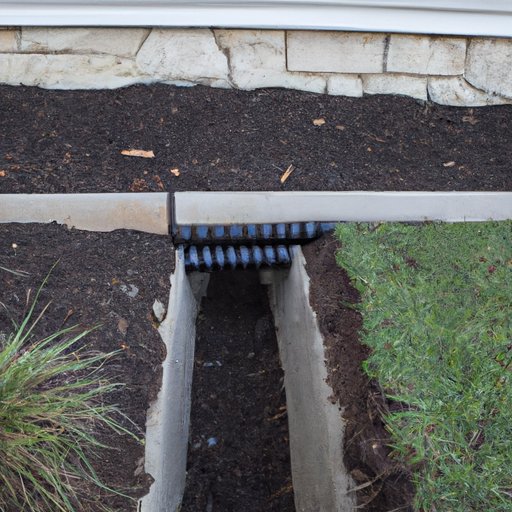Introduction
A French drain is a popular choice for many homeowners looking to improve the drainage of their property. It is an underground pipe that collects and diverts surface and subsurface water away from your home and into a safe, designated area. This type of drainage system is particularly useful in areas where heavy rains or melting snow can cause flooding.
The French drain works by redirecting water away from your home and its foundation. The system typically consists of a trench filled with gravel and a perforated pipe. The gravel helps to filter out debris, while the pipe allows water to flow freely through it.
Benefits of Installing a French Drain System in Your Home
Installing a French drain system in your home can offer a number of benefits. These include:
- Prevention of water damage: By redirecting water away from your home, you can help to avoid potential water damage to your foundation, walls, and other parts of your home.
- Improved drainage and soil health: A French drain system can help to improve the drainage of your soil and make it healthier. This can be beneficial for your plants, as they will have access to more oxygen and nutrients.
- Reduced risk of flooding: French drains can also help to reduce the risk of flooding in your area. By redirecting excess water away from your home, you can help to protect your property from potential flooding.

The Science Behind French Drains: A Comprehensive Guide
In order to understand how French drains work, it is important to understand the anatomy of the system. Here is a breakdown of the components of a French drain and how they work together:
- Trench: The trench is the first component of the French drain system. It is dug down to the depth of the water table and lined with gravel. The gravel helps to filter out debris and allows water to flow freely through it.
- Perforated Pipe: The second component of the system is the perforated pipe. This pipe is placed in the trench and runs along the length of it. The holes in the pipe allow water to flow freely through it and be redirected away from your home.
- Gravel: The gravel in the trench helps to filter out debris and allow water to flow freely. It also helps to keep the pipe in place and prevent it from becoming blocked or damaged.
The principles behind the design of a French drain are simple: the trench is dug deep enough so that the water table is below the level of the pipe. The pipe is then placed in the trench and the gravel is added on top. This allows the water to be redirected away from your home without causing any damage.

DIY French Drain Installation: What You Need to Know
If you are considering installing a French drain system in your home, there are a few things you should know. Here are some tips for successful DIY installation:
- Preparing the Area: Before beginning the installation process, it is important to properly prepare the area. Start by digging a trench along the perimeter of the area you want to divert water away from. Make sure the trench is at least six inches deep and two feet wide.
- Step-by-Step Instructions: Once the trench is prepared, add in the perforated pipe and cover it with gravel. Make sure the pipe is securely in place and add more gravel if necessary. Then, fill the remaining space in the trench with soil and tamp it down. Finally, cover the trench with grass seed or sod to finish off the installation.

French Drain Maintenance: Keeping Your Drain Working Properly
Once your French drain system is installed, it is important to maintain it properly. Regular inspection and cleaning can help to ensure that your drain stays in good condition. Here are some tips for proper maintenance:
- Regular Inspection: Periodically inspect your French drain system to make sure it is working properly. Check for any cracks, clogs, or other signs of damage.
- Cleaning: Regularly clean the area around your French drain system. Remove any leaves, twigs, or other debris that may be blocking the pipes.
- Repairing Damage: If you find any damage to your French drain system, it is important to repair it right away. Call a professional if necessary.
Conclusion
Installing a French drain system in your home can offer a number of benefits, including improved drainage, prevention of water damage, and reduced risk of flooding. Understanding the anatomy of a French drain and following the step-by-step instructions for installation can help you successfully install one in your home. Additionally, regular inspection and cleaning can help to ensure that your French drain system is working properly.
The benefits of having a French drain system in your home are numerous and can help to protect your home from potential water damage. We encourage you to take action and install one if necessary.
(Note: Is this article not meeting your expectations? Do you have knowledge or insights to share? Unlock new opportunities and expand your reach by joining our authors team. Click Registration to join us and share your expertise with our readers.)
